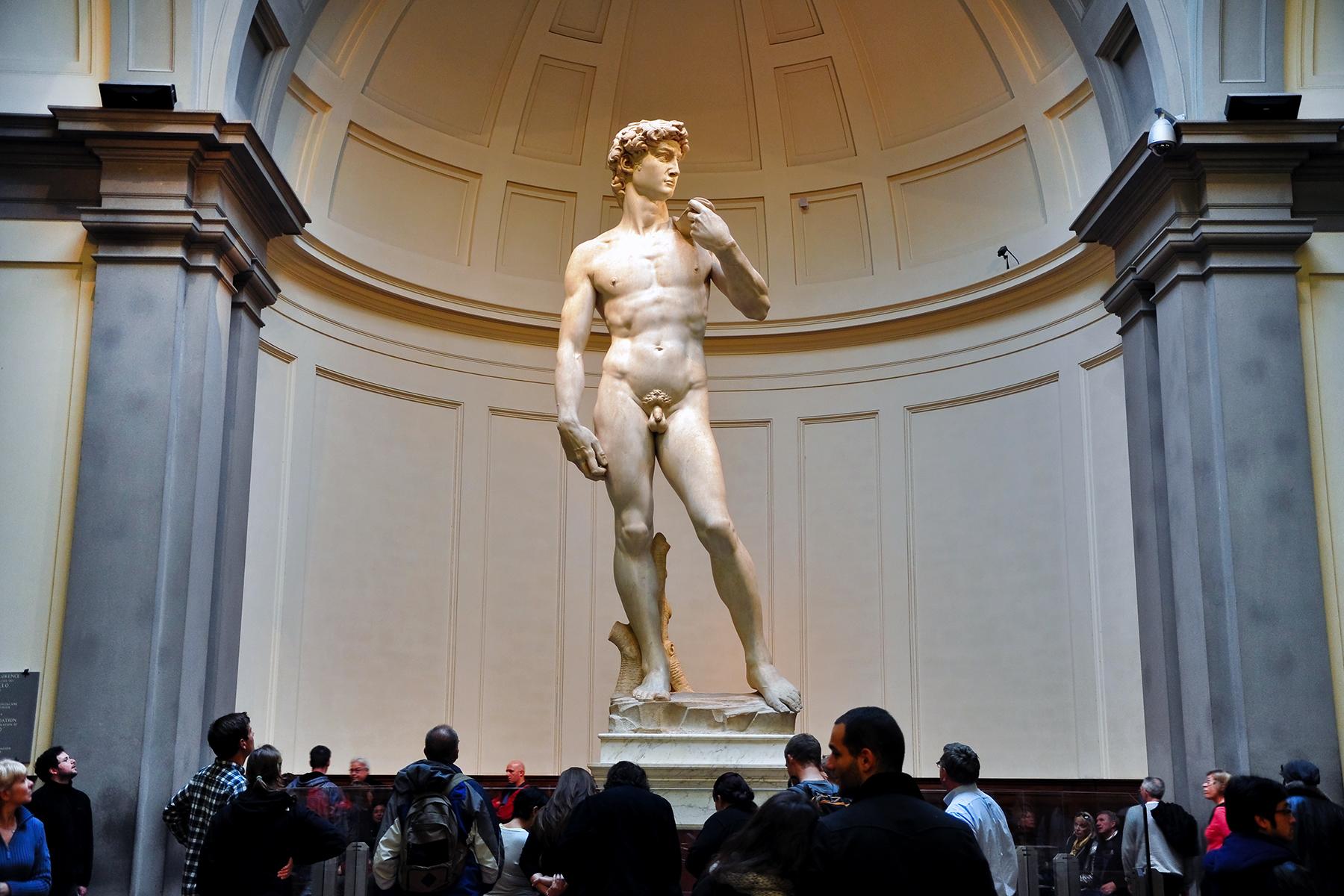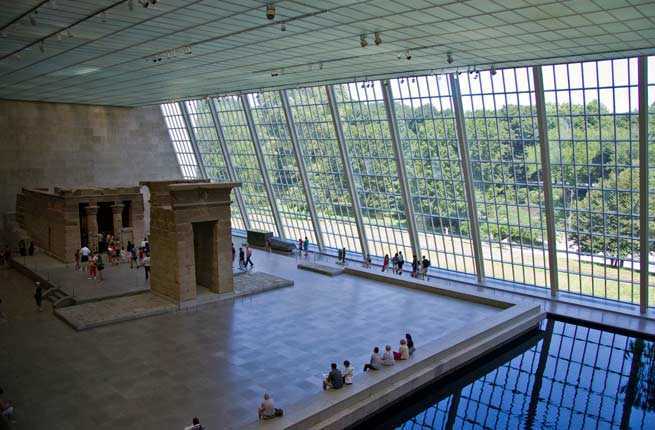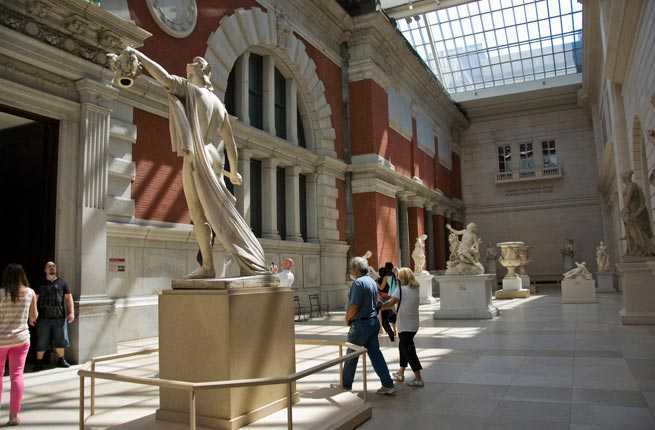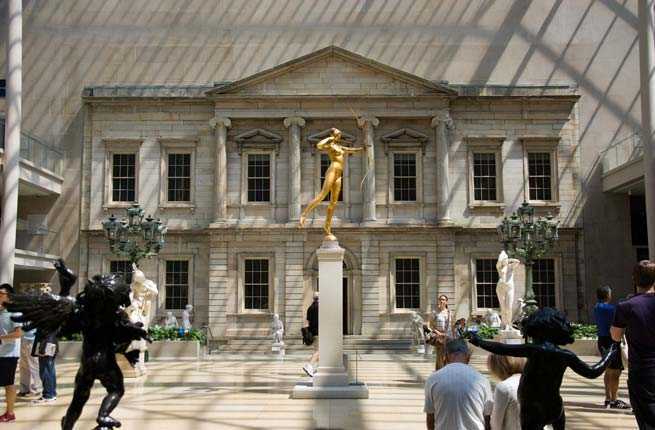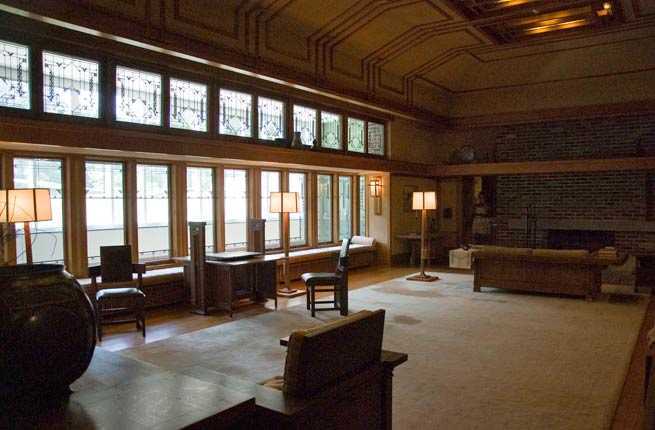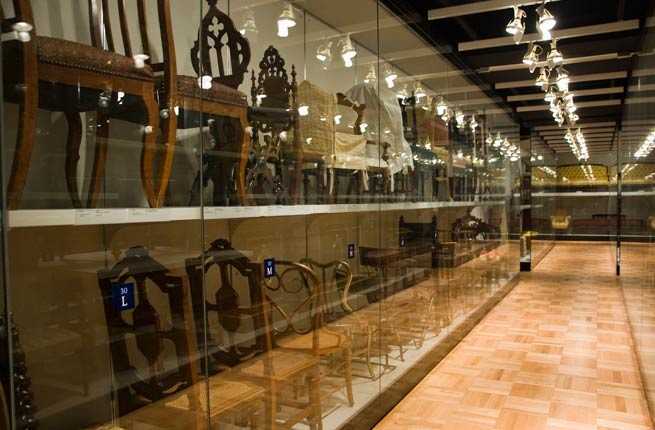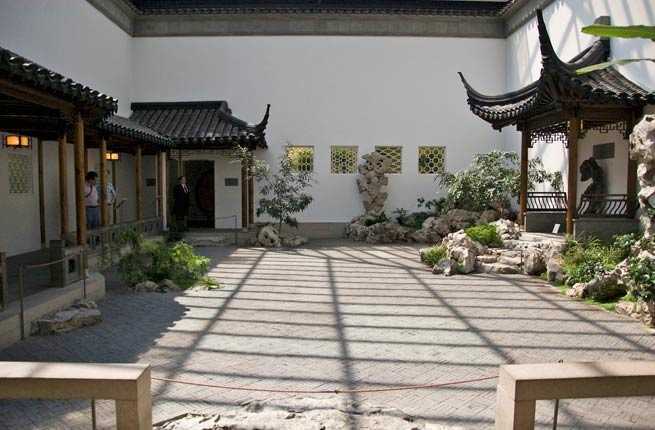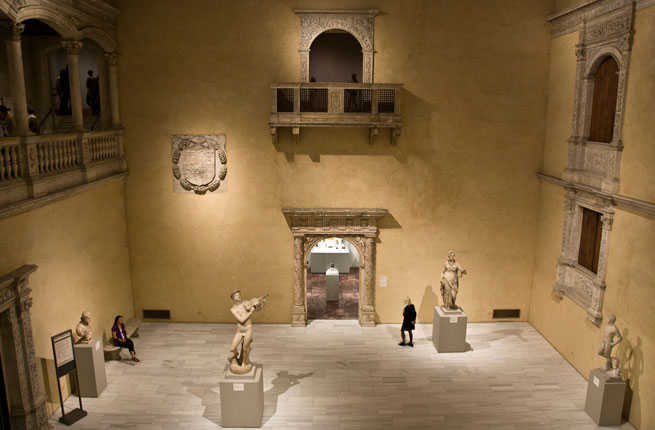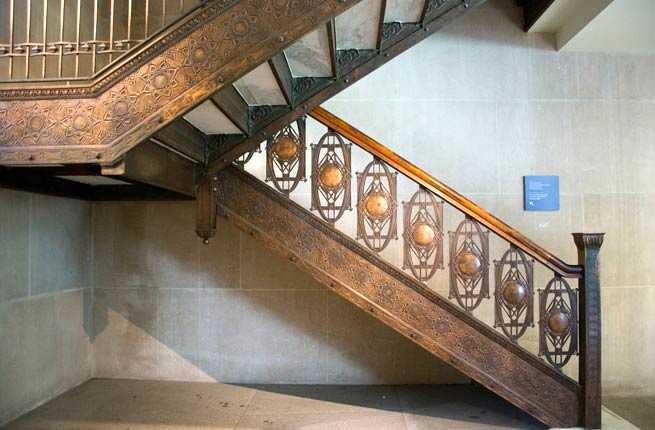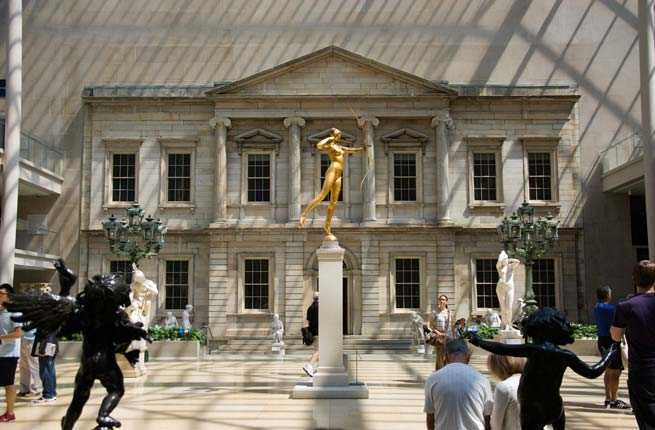
Tourists and lifelong New Yorkers alike can appreciate the iconic Metropolitan Museum of Art on Fifth Avenue. The museum houses one of the largest art collections in the world, including paintings by Europe’s great masters brought to New York by Gilded Age barons for the edification of the city. But there’s plenty to see in the Met besides the Titians, Monets, and Renoirs. Some of the less-visited wings hold some amazing surprises—from a replica of a Ming Dynasty courtyard to the façade of a bank rescued from destruction. Here are 15 things worth seeing besides the paintings. —Laura Itzkowitz
The Temple of Dendur
Dating back to the time of Augustus Caesar, circa 15 BC, the Temple of Dendur was a gift from Egypt to the United States in 1965. The most stunning work in the Met’s Egyptian collection, the temple occupies the bright and airy Sackler Wing, which has large skylights that illuminate the space and a pool of water meant to evoke the Nile. Up close, you can see ancient carvings and hieroglyphics on the temple's surface.
The Medieval Court
The Medieval Court, which today is located in the center of the museum, was the original freestanding building when the Metropolitan Museum of Art was commissioned in the 1880s. It was designed by one of the leading architects of the day, Calvert Vaux (who also designed Central Park) and his collaborator Jacob Wrey Mould. The cathedral-style wing is decorated by an 18th century Spanish choir screen. Every winter, the Met decorates an enormous Christmas tree to display here.
The Petrie Sculpture Court
Majestic full-body sculptures greet visitors to this European sculpture area. When you enter you can still see a wall of the original brick building by Vaux and Mould. The sculpture court features European masterpieces in marble and bronze, including works by Bernini, Canova and Rodin. Several of the statues were originally displayed in palace gardens around the world.
Beaux-arts bronze lampposts
Richard Morris Hunt designed the first major addition to the Metropolitan Museum, which includes the Great Hall, the Grand Staircase, and the Beaux-Arts façade on Fifth Avenue (though Hunt didn’t live to see construction on the façade completed). He also designed the bronze Beaux-Arts lampposts, which you might mistake for French lampposts. They highlight the European influences on 19th and early 20th century American art.
The façade of the branch bank
The Engelhard Court is the entrance to the Met’s American wing, which includes paintings, sculptures, decorative arts, and an impressive collection of stained glass and architectural elements. The Neoclassical façade at the north end of the court was rescued from the Branch Bank of the United States on Wall Street when it was torn down in the 1920s. The American wing was a freestanding building until 1980, when it was joined to the Met’s main building in this enclosed courtyard.
Versailles Panorama
You might think that a French artist would have created the Panoramic View of the Palace and Gardens of Versailles, but it was American artist John Vanderlyn who painted it so Americans could feel transported to the impressive palace. In the 19th century, panoramas were often installed in darkened cylindrical rooms and illuminated by hidden skylights, so people could enjoy the illusion of a real landscape.
The Frank Lloyd Wright Room
This out-of-the-way gallery in the American wing provides visitors with the only place in New York City to see a domestic space designed by Frank Lloyd Wright. The room is a replica of a living room Wright designed for a family in Wayzata, Minnesota. Wright designed all of the oak furniture, which was placed in the Met according to the original house’s floor plan.
Luce Study Center
In a far corner of the American wing, the Luce Study Center contains over 10,000 decorative and fine art objects in visible storage. There are rows upon rows of desks, chairs, commodes, lamps, silverware, ceramics, glassware and more. The objects are arranged chronologically by material. Anyone in need of interior design inspiration should check out this gallery.
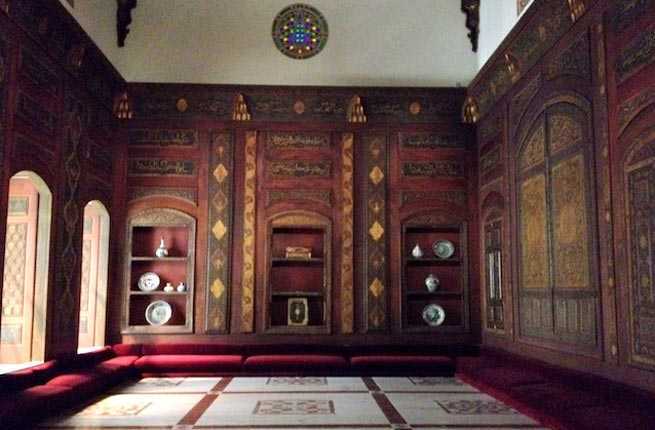
The Islamic Wing
The most recent renovation to the Metropolitan Museum is the Islamic wing on the second floor. A wealth of decorative objects spans the 7th to the 19th century and includes pieces from regions as geographically diverse as Spain and India. The highlight of the collection is the Damascus Room, an early 18th century reception room from the home of an upper class family. An interactive screen lets you read about its provenance, historical context, how it ended up at the Met, and the conservation process.
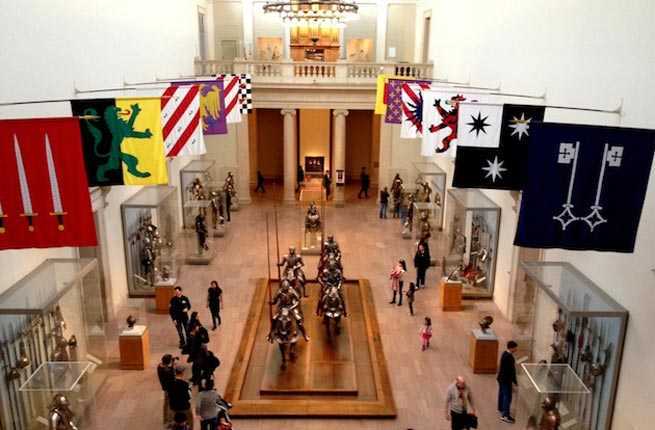
Arms and Armor Collection
Visitors interested in Renaissance history shouldn’t miss the Met’s arms and armor collection, which comprises approximately 14,000 objects made for European noblemen and kings. Here you can see Henry VIII’s personal armor and Greenwich armor from the English Royal workshops he founded. Renaissance banners and flags decorate the gallery.
Chinese Garden Court
It took a team of 26 Chinese craftsmen six months to assemble this replica of a Ming Dynasty garden from Suzhou. It was constructed using traditional tools and techniques, including an 18th century kiln and hand-chiseled granite from a quarry in Suzhou. There’s even a little koi pond, making this a particularly inviting corner of the museum.
Marble Patio From A Spanish Renaissance Castle
The fittings from this marble patio were once installed in the Park Avenue home of George Blumenthal before they made their way to the Met. If you look closely at the windows, archways, and balconies, you can see intricately carved details, like birds, sphinxes, dragons, masks, and vases. You can almost feel yourself transported to Andalucía, where the castle originated.
Staircase from the Chicago Stock Exchange
Another unique decorative element that has made its way into the architecture of the Metropolitan Museum of Art is a pair of Louis Sullivan staircases that connect the first and second floors of the Engelhard Court. Sullivan was the leader of the Chicago school of architects and these copper-plated staircases decorated with natural and geometric motifs show his mature style. They were rescued from the Chicago Stock Exchange when it was razed in 1972.
Picture Collage of the Met Collection
In the Luce Study Center, near the open storage collection in the American wing, visitors can admire a visual display of all the items in the Metropolitan Museum’s collection. A digital catalogue of the American wing can be viewed on two public computers in the center.
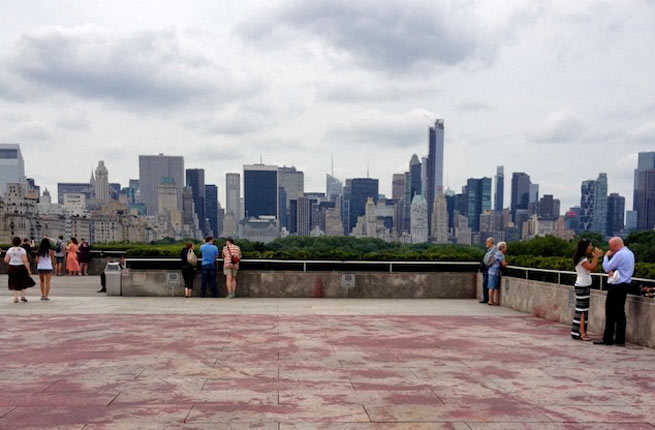
Rooftop Terrace
Any visit to the Met would be incomplete without a trip up to the rooftop terrace, which has panoramic views of Central Park and the Upper East Side. Every summer the Met invites a contemporary artist to create an installation on the roof. Visitors can also enjoy a selection of food and beverages while taking in the views.


